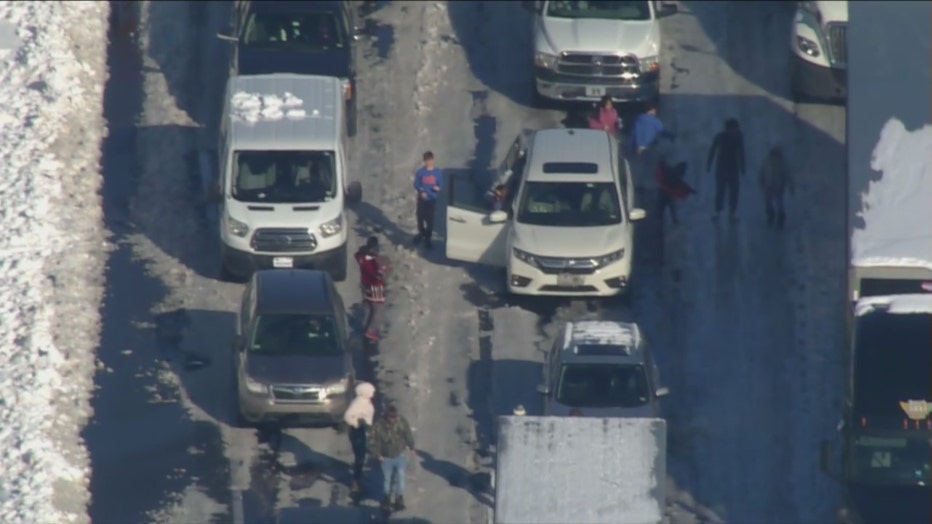Here’s what you should keep inside your car in case of an emergency
LOS ANGELES - Incidents like the I-95 freeway shutdown in the Fredericksburg, Virginia area are exactly why everyone should keep an emergency kit in their vehicles at all times.
Hundreds of drivers were stranded overnight after both directions of traffic on I-95 came to a standstill on Jan. 3 between Ruther Glen, Virginia, in Caroline County and exit 152 in Dumfries, Prince William County, the Virginia Department of Transportation said, after an accident and the winter weather kicked in.
Problems began when a truck jackknifed on Interstate 95, the main north-south highway along the East Coast, triggering a chain reaction as other cars lost control, state police said. Lanes in both directions became blocked across a 40-mile stretch of I-95 north of Richmond. As hours passed and night fell, drivers posted messages on social media about running out of fuel, food and water.
Some drivers expressed their frustrations with FOX5 DC explaining that they had feelings of hopelessness as they remained stranded in place overnight. "I left about 11 p.m. last night to go help some family in Fredericksburg who lost power and little did I know on the way there, there would be a traffic jam," one driver said. "I was in that traffic jam for about 12 ½ hours before I finally got out. It looked like state troopers started to redirecting traffic off of the highway."
RELATED: I-95 Virginia shutdown: Stranded drivers walk dogs, run out of food and water

Stranded drivers get out of their cars on I-95 Tuesday. ( )
By the morning of Jan. 4, a single lane of traffic was creeping forward between many stalled trucks and cars in one direction.
Crews were working to tow the stopped trucks and to remove snow and ice while guiding stranded motorists to the nearest exits, transportation officials said.
In a worst-case scenario like this, experts say items like a compass, jumper cables and drinking water should be mandatory in every driver’s vehicle at all times.
But the National Safety Council, a U.S. nonprofit safety advocate, has a more comprehensive list.
The organization says emergency supply kits should be checked every six months and expired items should be replaced regularly.
Here is what a vehicle emergency supply kit should include:
- A properly inflated spare tire, wheel wrench and tripod jack
- Jumper cables
- Tool kit and/or a multipurpose utility tool
- Flashlight and extra batteries
- Reflective triangles and brightly colored cloth to make your vehicle more visible
- Compass
- First aid kit with gauze, tape, bandages, antibiotic ointment, aspirin, a blanket, nonlatex gloves, scissors, hydrocortisone, thermometer, tweezers and instant cold compress
- Nonperishable, high-energy foods, such as unsalted nuts, dried fruits and hard candy
- Drinking water
- Reflective vest in case you need to walk to get help
- Car charger for your cell phone
- Fire extinguisher
- Duct tape
- Rain poncho
- Additional items for cold weather include a snow brush, shovel, windshield washer fluid, warm clothing, cat litter for traction and blankets
Daniel Miller contributed to this story. It was reported from Los Angeles.


